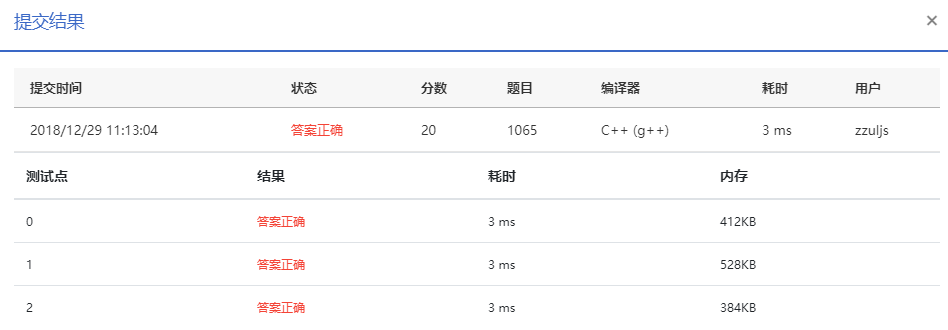题目
Given three integers A, B and C in , you are supposed to tell whether .
Input Specification:
The first line of the input gives the positive number of test cases, T (≤10). Then T test cases follow, each consists of a single line containing three integers A, B and C, separated by single spaces.
Output Specification:
For each test case, output in one line Case #X: true if A+B>C, or Case #X: false otherwise, where X is the case number (starting from 1).
Sample Input:
3
1 2 3
2 3 4
9223372036854775807 -9223372036854775808 0
Sample Output:
Case #1: false
Case #2: true
Case #3: false
解题思路
题目大意: 给出三个数A,B,C,计算相加之后是否满足A+B>C 。
解题思路: 这道题最常规的思路应该是超大数运算,因为题目给的范围是超过整型的最大存储值的。但是如果用超大数计算,这道题太麻烦了,20分的题这么花时间,值不值得呢。网上给出了一种另辟蹊径的做法,利用溢出的特性,以及这道题的漏洞来解。
要知道——
1. 正数相加向上溢出最后得到的是一个负数,比如——

如果a>0,b>0,但是结果得到的却是个负值,显然a+b>c,因为c的最大值是
,a+b溢出,显然是超过这个最大值了;
2. 第二种情况,如果是负数相加向下溢出,得到的是正值,显然a+b<c,同理,超出c的最小值了,必定是小于的;
3. 最后一种情况,就是不溢出,直接判断是否满足a+b>c。
/*
** @Brief:No.1062 of PAT advanced level.
** @Author:Jason.Lee
** @Date:2018-12-28
** @Solution: Accepted!
*/
#include<iostream>
using namespace std;
int main(){
int N;
long long a,b,c;
while(cin>>N){
for(int i=0;i<N;i++){
bool equal = false;
cin>>a>>b>>c;
long long add = a+b;
if(a>0&&b>0&&add<=0) equal = true;
else if(a<0&&b<0&&add>=0) equal = false;
else if(add>c) equal = true;
cout<<"Case #"<<i+1<<": ";
cout<<(equal?"true":"false")<<endl;
}
}
return 0;
}

总结
能想出来溢出这种特性,并找到PAT数据的漏洞的人,也是牛批……